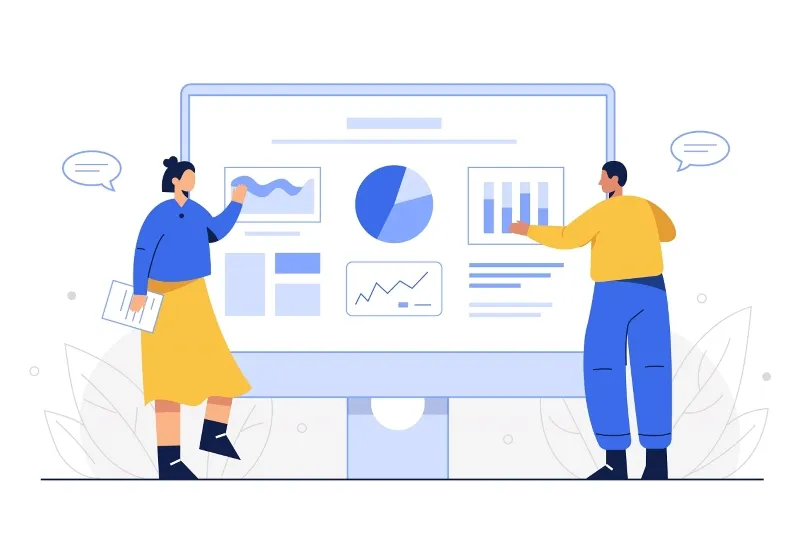What is Procurement Analytics?
Procurement analytics involves collecting and analyzing data related to the procurement process, such as purchasing patterns, supplier performance, and cost analysis. By using data visualization and other advanced technologies, data analytics provides insights into the procurement process that was previously inaccessible. The insights gained can help organizations optimize their procurement process, improve supplier relationships, and reduce costs.

Understanding analytics for procurement operations is essential
Key Benefits of Procurement Data Analytics
Analytics in procurement provides businesses with insights that can help make informed decisions to optimize procurement strategies and drive efficiencies. Here are some of the key benefits of procurement data analytics.

Why businesses should create procurement data analytics
Improved Supplier Management
By analyzing supplier performance data, data analytics in procurement can help organizations identify areas for improvement and optimize supplier relationships.
For example, by tracking supplier lead times, delivery performance, and quality metrics, through analytics, businesses can identify high-performing suppliers and incentivize them to maintain their procurement performance. At the same time, underperforming suppliers can be identified and either incentivized to improve their performance or replaced with more reliable alternatives.
Cost Reduction
Procurement data analytics helps organizations identify cost-saving opportunities by analyzing purchasing patterns, supplier performance, and cost data. For example, by analyzing purchasing patterns, businesses can identify opportunities to consolidate purchases and negotiate better prices with suppliers.
Similarly, by tracking supplier performance and cost data, procurement data analytics can identify opportunities to streamline the procurement process and reduce costs. By identifying cost-saving opportunities through data analytics, businesses can make data-driven decisions that reduce expenses and increase profitability.
Better Decision-Making
Procurement data analytics provides insights into the procurement process, allowing organizations to make informed decisions that drive efficiencies and reduce costs. By providing visibility into procurement processes and supplier performance, analytics for procurement operations helps businesses make informed decisions about which suppliers to use, which products to purchase, and when to purchase them. This helps businesses optimize their procurement strategies and make decisions that are grounded in data, reducing the risk of costly mistakes.
Enhanced Data Accuracy
Data analytics in procurement helps organizations ensure data accuracy and integrity, enabling them to make better decisions based on reliable data. By analyzing procurement data and identifying inconsistencies, errors, and inaccuracies, businesses can correct data issues and ensure data integrity. This, in turn, helps businesses make more informed decisions that are based on accurate data, reducing the risk of costly mistakes and optimizing procurement strategies.

Businesses are beneficial from conducting analytics for procurement
Best Practices for Successful Analytics in Procurement
Implementing procurement data analytics can be a daunting task for organizations, especially if they are new to data analysis. However, following the best practices outlined below can make the process more straightforward and more successful.
Set Clear Objectives and KPIs
Identifying clear objectives and key performance indicators (KPIs) is a critical step in successful data analytics. These objectives and KPIs help organizations stay focused on their desired outcomes and ensure that their procurement strategies align with their business goals. Some examples of procurement objectives and KPIs include reducing procurement costs, improving supplier performance, and optimizing the procurement process.
Gather and Validate the Data
Procurement data analytics relies heavily on accurate and reliable data. Gathering data from various sources, such as procurement software, financial systems, and supplier portals, is the first step. However, data validation is equally crucial. Organizations need to ensure that the data they gather is complete, accurate, and consistent across all sources. Data cleaning and validation help reduce the likelihood of errors and ensure that insights generated from the data are reliable.
Analyze Data Using Visualization Tools
Procurement data can be complex and overwhelming. Analyzing large amounts of data can be challenging without the right tools. Data visualization tools, such as dashboards and charts, can help organizations make sense of their procurement data. These tools make it easier to identify trends, patterns, and outliers that can inform procurement strategies.
Draw Insights and Act on Them
Once the data is analyzed, organizations need to draw insights from it and act on them. Insights generated from data analytics can help organizations optimize their procurement processes, reduce costs, and improve supplier relationships. The insights drawn should align with the previously identified objectives and KPIs, which will help organizations make data-driven decisions that align with their business goals.
Continuously Monitor and Improve
Procurement data analytics is not a one-time exercise. It requires continuous monitoring and improvement to ensure that procurement strategies remain aligned with business goals. Organizations need to track procurement performance regularly, analyze data trends, and adjust procurement strategies based on insights generated. This continuous improvement cycle helps organizations stay agile and responsive to changing market conditions and business needs.

Businesses can consider implementing suggested practices to utilize procurement data analytics
Procurement analytics is an essential tool for organizations to optimize their procurement process, reduce costs, and increase profitability. By leveraging data analysis, organizations can gain insights into the procurement process that was previously inaccessible and optimize the procurement process.












Replies to This Discussion